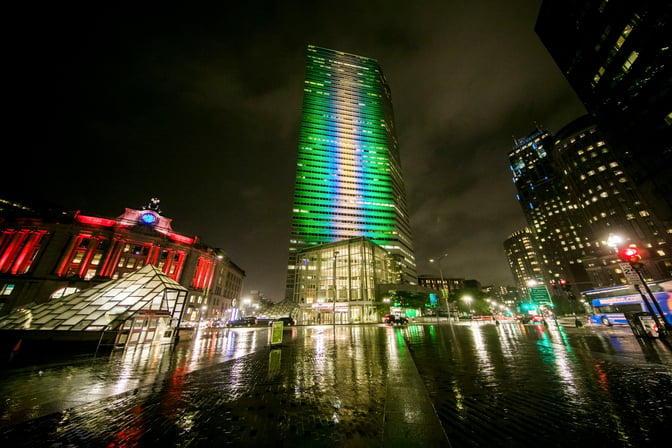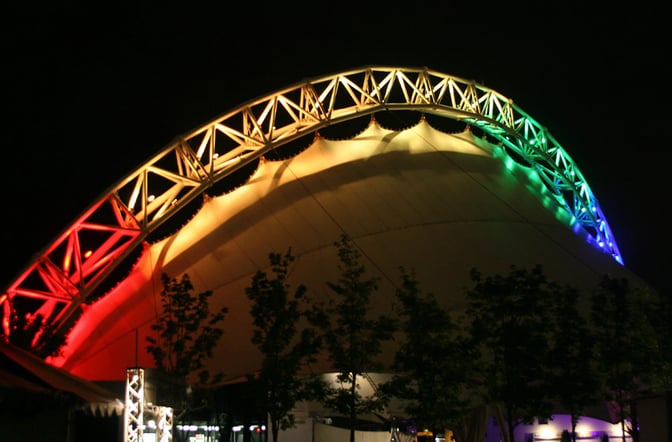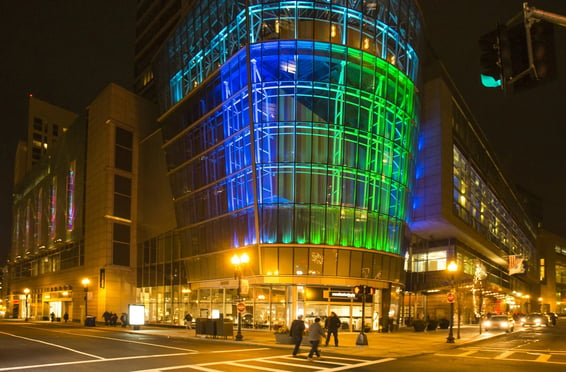Share this
by PORT on Dec 12, 2023 1:12:59 PM
After all fixtures are working well, the installer will program and configure the lighting control system to achieve specific lighting scenarios and automation sequences. This process can include testing control interfaces, timers, dimmers, and sensors to ensure
proper functionality.
Once the installation is complete, the installation company typically will provide training to end-users or building operators on how to operate and maintain the lighting system as well as offer guidance on troubleshooting any potential problems.
Once this training is complete, most installers will be available for ongoing support including but not limited to maintenance, repairs, or replacements as needed.
Why PORT?
When using PORT for your architectural installation needs, you can expect support and expertise through every step of the process. Our installers have the unique capabilities to design and build architectural installations from the ground up.
Our team takes their extensive knowledge of lighting design, installation, and controls, and applies that expertise to every aspect of the installation process.
What To Expect When Using PORT For Your Architectural Lighting Installation
Step 1: Preparation
The installation process begins with bringing in all required equipment to make the lighting installation a success. On arrival, our team will work to ensure that the working space is clear of obstructions, electrical connections are in place, and that design plans are readily available.
Our installation team is trained and equipped with all necessary safety gear to ensure our work is done in the safest manner possible.
Step 2: Installation of Fixtures
Once preparations are complete, it is time to install the fixtures. Using a lighting plan, fixtures will be placed in exact locations according to the design drawings. These fixtures will then be
mounted to their required surfaces to ensure permanent placement.
Once these fixtures are placed, they will have to be connected to the existing electrical system by a licensed electrician. This can include running power cables, low-voltage wiring, and attaching control cables to each fixture.
Once all fixtures are mounted and connected, they will be tested to ensure they are working correctly. Any fixtures that are not up to standard will be adjusted until all issues are resolved.

Step 3: Controls Integration
Once all of the fixtures are mounted and connected, it is time for the setup of a control system. This system can include dimmers, sensors, timers, and even smart controls.
The installation team will work to ensure the control is set up and ready to work on any/all requested lighting schemes. Once the control system is set up, the PORT Team will ensure the system is commissioned and programmed up to customer requirements.
Step 4: Training and Ongoing Support
After the architectural lighting is installed, programmed, and set up our team will come on-site to provide end-user training. These pieces of training are meant for any end-users including but not limited to building owners and facility managers.
These trainings will teach end-users how to operate and control the lighting system. The training can include tasks such as turning lights on and off, adjusting brightness, setting lighting scenes, and troubleshooting common issues.
If there is a complex control system or automation involved in the installation, training can also demonstrate how to use touch panels, mobile apps, or other control interfaces. When using PORT for your lighting installation needs, our team will be available for ongoing support as long as needed. This support can include maintenance, repairs, and replacements.
Other services we provide:
- Lighting Production Services
- Technical Production Management
- Production Design
- Corporate Production Management
- Theatrical Lighting Design/Specification
- Theatrical Lighting Installation
- Stage Curtain & Rigging Installation
- Rigging Inspections






No Comments Yet
Let us know what you think